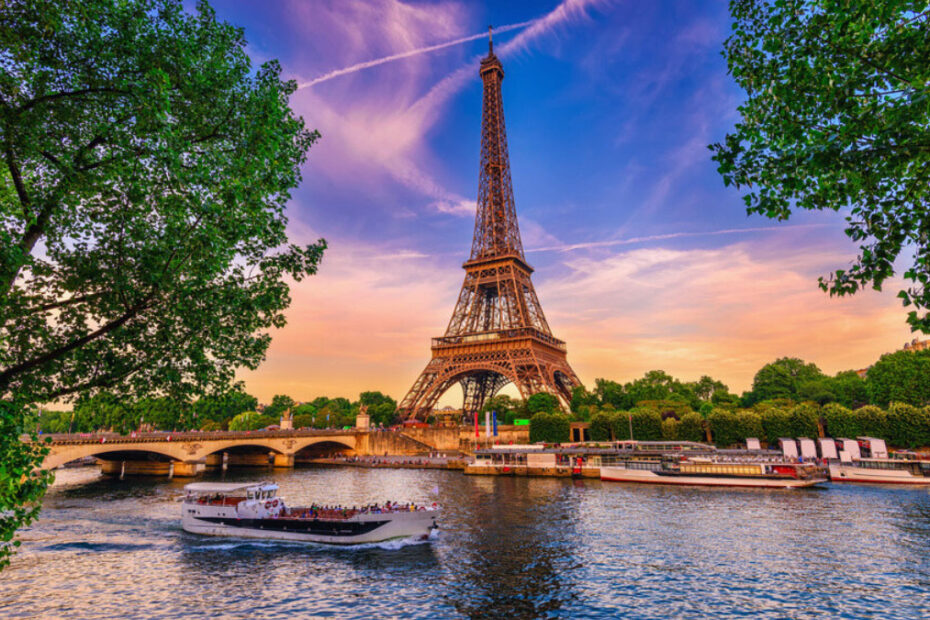Dreaming of your first trip to Paris? The City of Light promises romance, history, and culture at every corner. But before you pack your bags, there are a few essential things you should know to make your visit as smooth and enjoyable as possible.
From understanding local customs to exploring the metro, these tips will help you blend in like a local and avoid common tourist pitfalls. Get ready to discover 21 must-know insights that will transform your Parisian adventure into an unforgettable experience.
Key Takeaways
- Geographic Orientation: Understanding Paris’ layout, including its 20 arrondissements and the division by the River Seine into Left and Right Banks, is crucial for seamless navigation and enriched exploration.
- Optimal Visit Times: Visiting during spring (April to June) or autumn (September to November) offers mild weather and fewer tourists, providing a more enjoyable experience than the crowded summer or cold winter.
- Cultural Etiquette: Basic French phrases and courteous greetings, like “Bonjour” and “Merci,” enhance interactions with locals and demonstrate respect for French customs.
- Transportation Tips: Utilize Paris’ extensive metro and train systems with options like single tickets or multi-day passes for efficient travel. Rideshare apps and bike-sharing programs offer flexible alternatives.
- Safety Precautions: Stay vigilant against common tourist scams and pickpockets by using secure bags, avoiding easily accessible pockets, and politely declining unsolicited offers.
- Accommodation Advice: Central neighborhoods such as Le Marais, Saint-Germain-des-Prés, and Latin Quarter are recommended for their proximity to major attractions and vibrant experiences. Booking in advance ensures better choices, especially during peak seasons.
Geography and Orientation
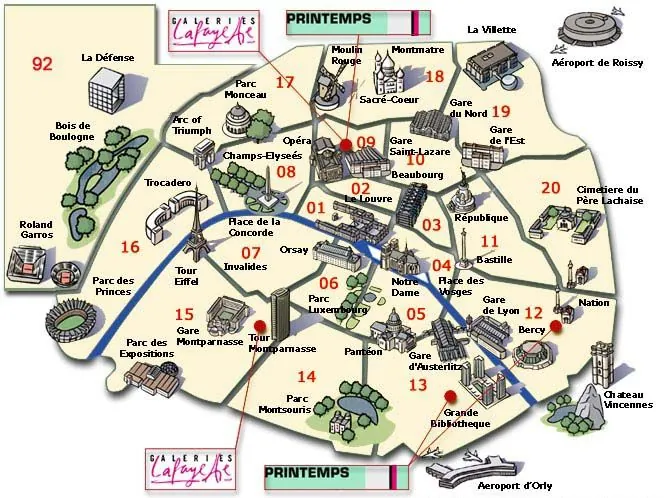
Understanding Paris’ geography and orientation can greatly improve your first visit. Paris is divided into 20 arrondissements, spiraling from the center outward. These neighborhoods each have unique characteristics and attractions.
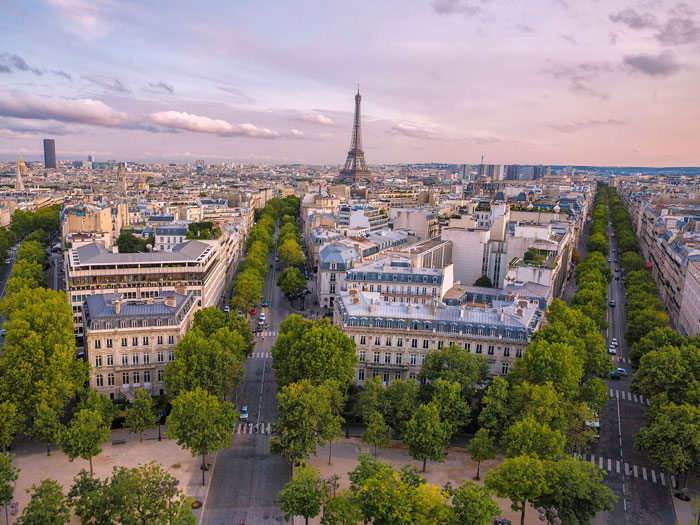
Arrondissements
Paris’ 20 arrondissements create a spiral pattern starting at the city’s heart. The 1st arrondissement includes landmarks like the Louvre, while the 7th boasts the Eiffel Tower. Knowing the layout helps plan your itinerary.
Left and Right Banks
The River Seine divides Paris into the Left Bank (Rive Gauche) and the Right Bank (Rive Droite). The Left Bank features the Latin Quarter and the Musée d’Orsay. The Right Bank is home to attractions like the Louvre Museum. Each bank offers distinct experiences and charms.
- Montmartre: This area, in the 18th arrondissement, is famous for the Sacre Coeur and Moulin Rouge. Montmartre’s winding streets and artistic vibe provide a unique experience.
- Eiffel Tower: Located in the 7th arrondissement, the Eiffel Tower is an iconic landmark. Expect long lines but worth the visit.
Knowing these key geographical points helps you navigate and appreciate Paris more effectively.
Best Time to Visit Paris

The best time to visit Paris is during the spring and autumn months. Enjoy mild weather, fewer tourists, and picturesque scenery that captures the city’s charm.
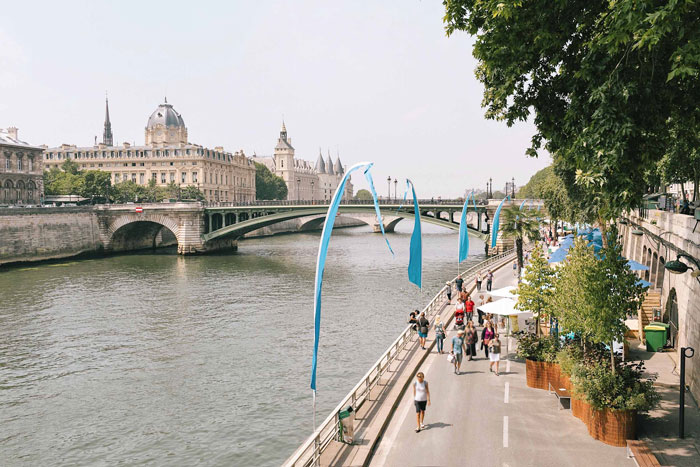
Spring (April to June)
Spring in Paris brings blooming flowers and mild temperatures ranging from 12°C to 20°C (54°F to 68°F). Stroll through the Luxembourg Gardens or enjoy a Seine River cruise without the summer crowds. Pack layers for cooler mornings and evenings, comfortable walking shoes, and a light jacket.
Autumn (September to November)
Autumn offers pleasant temperatures and fewer tourists. Daytime temperatures range from 12°C to 20°C (54°F to 68°F), providing a perfect setting for exploring sites like Montmartre and the Louvre Museum. Make sure to pack layers, including a light sweater and a waterproof jacket for occasional rain.
Summer (July to August)
Summer is peak tourist season with warm weather and bustling crowds. Temperatures range from 15°C to 25°C (59°F to 77°F). If you prefer vibrant street life and outdoor festivals, summer is ideal. Be prepared for long lines and higher costs. Pack breathable clothing, sunscreen, and a hat to stay cool.
Winter (December to February)
Winter sees fewer tourists and lower prices for accommodations and attractions. Temperatures range from 3°C to 7°C (37°F to 45°F). Enjoy the city’s festive atmosphere, holiday markets, and ice skating rinks. Pack warm clothing, including a heavy coat, scarf, gloves, and waterproof boots.
Weather and Packing Tips
Spring and Autumn:
- Mild temperatures: 12°C to 20°C (54°F to 68°F)
- Pack layers, light jackets, and comfortable shoes
- Warm temperatures: 15°C to 25°C (59°F to 77°F)
- Pack breathable clothing, sunscreen, and a hat
- Cool temperatures: 3°C to 7°C (37°F to 45°F)
- Pack warm, waterproof clothing like heavy coats, scarves, and gloves
Language and Etiquette

Language
Many Parisians speak some English, but it’s not universally prevalent, especially among older residents. Learn basic French phrases to navigate daily interactions smoothly. Essential phrases include “Bonjour” (hello), “Merci” (thank you), “S’il vous plait” (please), and “Excusez-Moi” (excuse me). These simple words show respect for the local culture and make a great first impression.
Etiquette
Greetings matter significantly in French culture. Always begin interactions with a “Bonjour” or “Bonsoir” (good evening) and wait for a response before continuing. This courteous approach sets a positive tone for the conversation.
Interacting with Locals
Politeness and courtesy are highly valued in France. When entering a shop or restaurant, use phrases like “Bonjour, madame/monsieur” to show respect. Simple acts of politeness, such as saying “Pardon” when passing by someone, can enhance your interactions with locals.
Dining
Dinner service in Paris typically starts around 7:30 PM, and many restaurants close between lunch and dinner. Reservations are often necessary, especially for high-end establishments. While tipping isn’t compulsory, it’s appreciated as a gesture of gratitude for good service.
Maximizing your experience in Paris involves embracing local customs and etiquette. These measures create a respectful and enjoyable journey, fostering smoother interactions with Parisians and enriching your travel experience.
Transportation in Paris
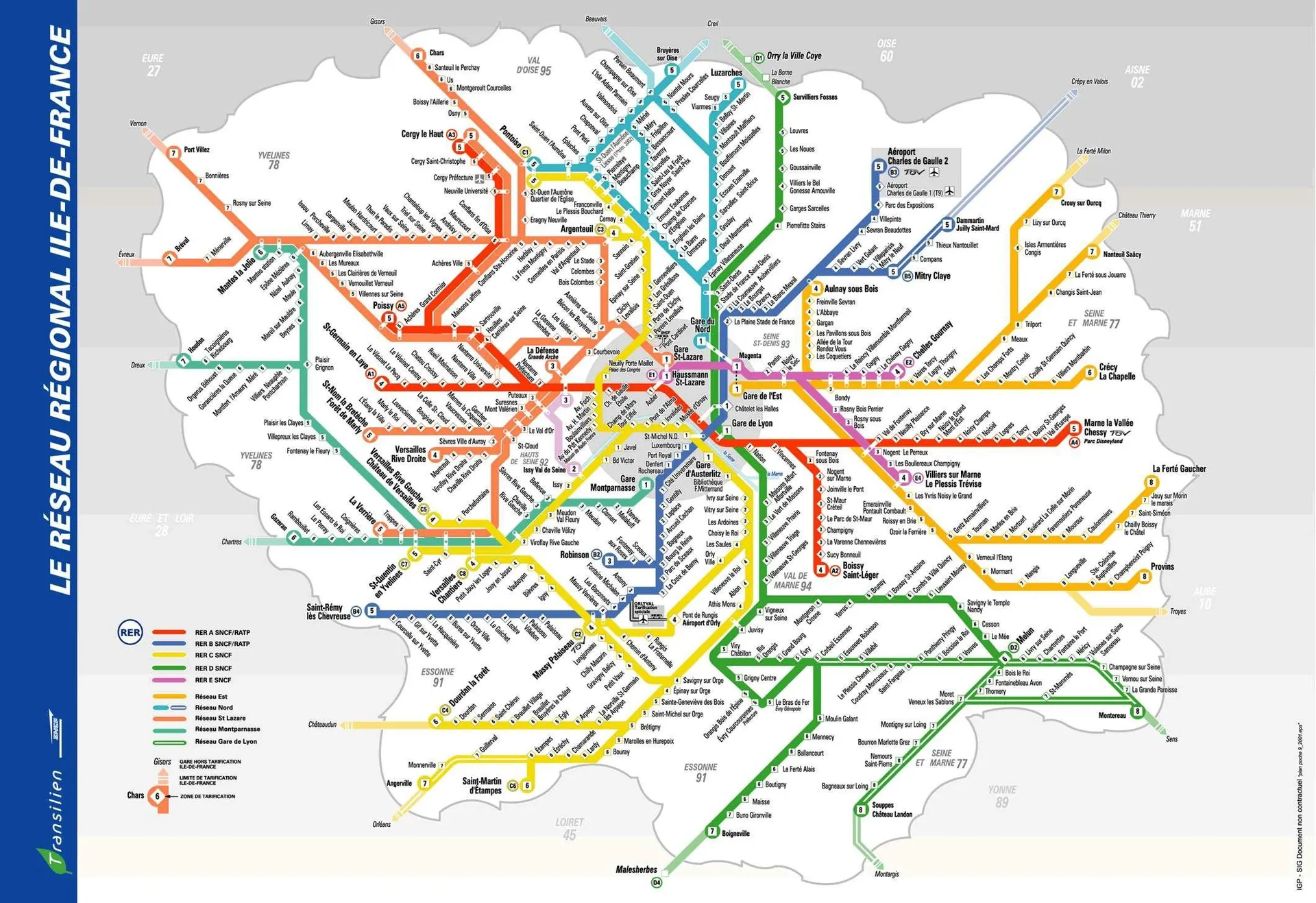
Exploring Paris efficiently makes your trip enjoyable. The city’s public transportation is extensive and convenient, especially for first-time visitors.
Using the Metro and Trains
Paris boasts a well-organized metro and RER system. The metro runs from 5:30 AM to 12:30 AM on weekdays and slightly shorter hours on weekends. Be mindful of closing times when planning nighttime outings.
Tickets and Passes: Single tickets, carnet (book of 10), and multi-day passes are available. Consider a Paris Visite pass for unlimited travel across metro, RER, buses, trams, and even some regional trains. Purchase tickets at machines in metro stations. Have coins or small bills handy; some machines may not accept large notes or international cards. For example, €10 and €20 notes are ideal.
Exploring the System: Paris has six main-line train stations, all connected by the metro, making day trips to nearby destinations straightforward. Lines are color-coded and numbered. Pay attention to the terminus station of a line to ensure you’re heading in the right direction. Maps are available at all stations for easy reference.
Rideshare and Bike Sharing
Adding flexibility to your travel plans, rideshares and bike shares are great options for getting around Paris.
Rideshare Apps: Services like Uber and Bolt operate throughout the city, offering a convenient alternative to taxis. Use these for late nights or when you’re carrying luggage. App-based platforms provide fare estimates upfront, which helps with budgeting.
Bike Sharing Programs: Vélib’ Métropole is the city’s bike-share system, offering both mechanical and electric bikes. Over 1,400 stations are scattered around Paris, ensuring you’re never far from a bike. Download the Vélib’ app to locate bikes and docking stations. Bike lanes and riverside paths provide a scenic and eco-friendly way to explore. A daily pass is available for short-term visitors, making it easy to incorporate biking into your itinerary.
Remember, understanding and utilizing these transportation options enhances your Parisian experience, giving you more time to enjoy the city’s attractions and hidden gems.
Currency and Payment Tips
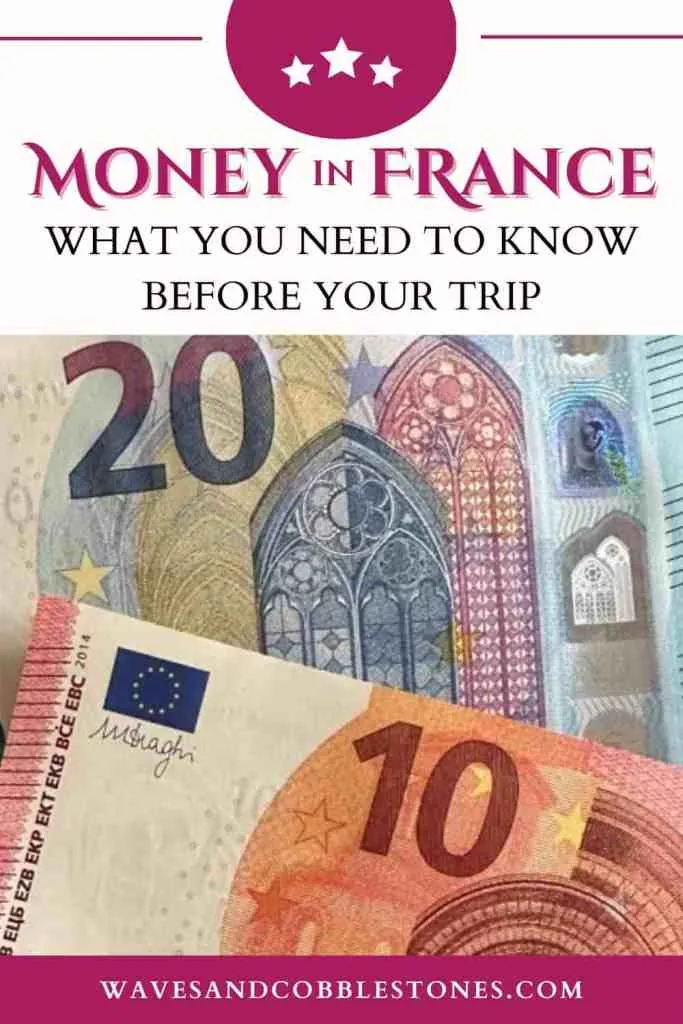
Exploring Paris’s financial world is essential for a smooth and enjoyable visit. Understanding how to handle currency and payments will help you avoid common pitfalls and focus on savoring the city’s charm.
Cash vs Credit Cards
Cash remains important in Paris even though the global rise of digital payments. Many establishments, such as traditional cafes, street markets, and smaller shops, often prefer or only accept cash. Carrying euros for such transactions can simplify your experience. Coins, in particular, are valuable for using public transportation or vending machines, especially at busy spots like the Paris CDG airport, where machines might not accept larger notes or international cards reliably.
But, major credit cards like Visa and MasterCard are widely accepted across the city. From upscale restaurants and boutiques to tourist attractions, you’ll rarely encounter issues. It’s prudent to have a backup card in case your primary card is declined. Ensure your credit card is equipped with a chip and contactless payment capabilities, as these are standard in Paris.
ATMs and Currency Exchange
ATMs are abundant in Paris, providing a convenient way to withdraw euros directly. Banks and official ATM machines typically offer better exchange rates than currency exchange booths at airports or tourist areas. When using ATMs, withdrawing a larger amount at once can save on transaction fees, though be cautious about carrying too much cash.
Currency exchange services are available across the city, but rates vary. Opt for reputable exchange offices and avoid those charging high commissions. Hotels might offer exchange services, but they’re usually less favorable. Check the current conversion rates online before exchanging money to ensure you’re getting a fair deal.
By planning your currency and payment methods effectively, you can enjoy Paris without financial stress and focus on its beauty, cuisine, and culture.
Must-See Sights and Attractions
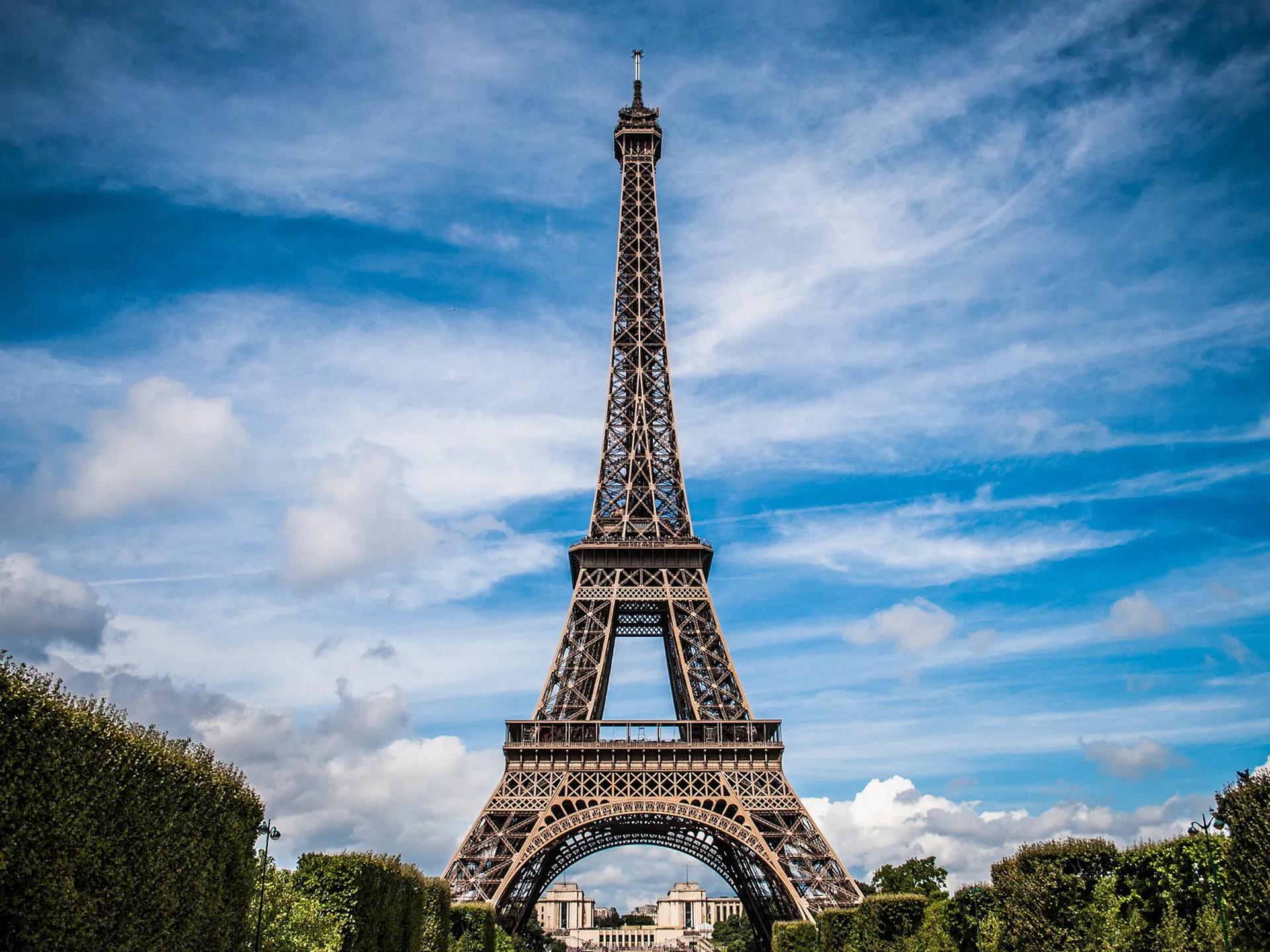
Paris, known for its historic landmarks and cultural allure, offers a wealth of iconic sights. From breathtaking views to world-class art, this guide highlights must-see attractions to enhance your visit.
Eiffel Tower Dos and Don’ts
Visiting the Eiffel Tower is a quintessential Parisian experience. The tower stands at 1,083 feet tall, offering panoramic views of the city.
Dos:
- Purchase Tickets in Advance: Buying tickets online helps avoid long queues at this top tourist spot.
- Watch for Pickpockets: The area around the tower is bustling with tourists, making it a prime location for pickpockets. Keep your belongings secure.
Don’ts:
- Avoid Busy Times: Weekends and evenings can be crowded. Visiting early in the morning or late at night provides a more tranquil experience.
- Skip Unofficial Vendors: Ignore street vendors offering quick entry or unofficial memorabilia.
Museums and Landmarks
Paris’s museums and landmarks offer unparalleled historical and artistic significance. Capturing the essence of French culture through these sites is essential for any visitor.
- The Louvre: Home to over 35,000 works of art, including the iconic Mona Lisa. It’s the largest art museum globally and can be overwhelming due to its size. Plan your visit using maps and focus on specific sections to avoid fatigue.
- Musee d’Orsay: Located in a former railway station, this museum boasts an extensive collection of Impressionist and Post-Impressionist masterpieces. Works by Monet, Van Gogh, and Renoir are highlights. Enjoy the airy, spacious interior, which allows for relaxed viewing.
- Arc de Triomphe: Commissioned by Napoleon, this monumental arch honors those who fought for France. The climb to the top, involving 284 steps, rewards with a stunning 360-degree view of Paris.
- Notre-Dame Cathedral: An architectural gem with Gothic splendor. Even though ongoing renovations, the cathedral’s facade and its surroundings remain a must-visit for history and architecture enthusiasts.
- Montmartre: Wander through this historically artistic neighborhood, renowned for its bohemian past. The area is filled with narrow streets, cafes, and boutiques. Don’t miss the Basilica of the Sacré-Cœur, perched at the highest point in Paris, offering breathtaking views of the city.
These sites not only reveal the rich history and culture of Paris but also provide an immersive experience into the city’s grand storytelling.
Dining and Drinking in Paris
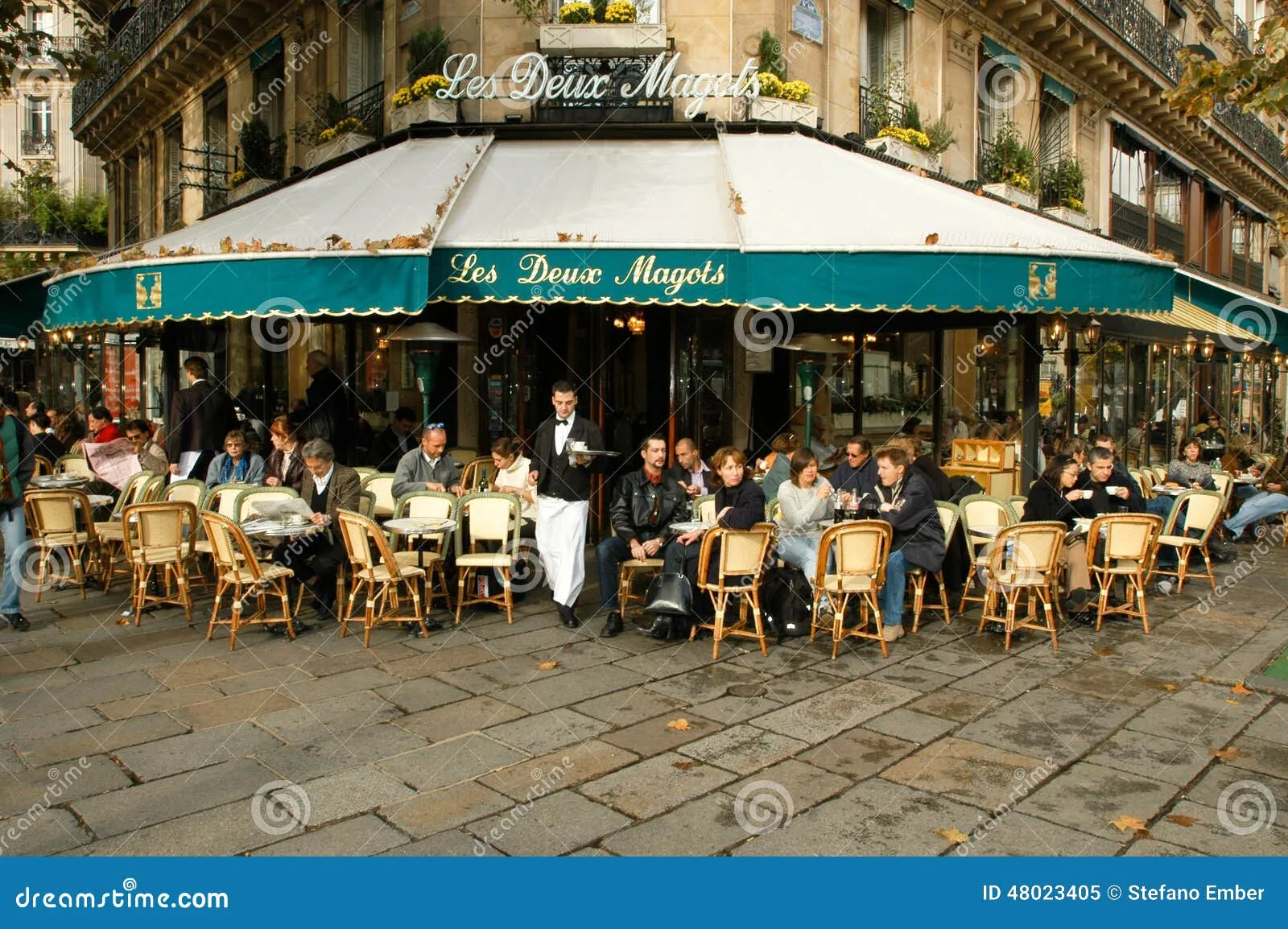
Paris offers delightful dining and drinking experiences, merging culinary art with cultural essence. From picking the best picnic spots to embracing restaurant etiquette, these tips ensure you enjoy every bite and sip in the City of Light.
Meal Times
Restaurants generally close between 2-7 PM. If hunger strikes during these hours, visit a boulangerie for fresh bread and pastries, a patisserie for sweet treats, or a fast food place for a quicker bite.
Picnic Spots
Picnics are quintessentially Parisian. Enjoying a fresh baguette, cheese, and wine at Parc du Champ de Mars near the Eiffel Tower provides an iconic view. Luxembourg Gardens offers a serene atmosphere ideal for a leisurely outdoor meal.
Food Tours
Food tours provide an excellent way to sample local cuisine and learn about the culinary culture. The Eating Europe Montmartre Tour, for instance, lets you explore charming streets while tasting Parisian delights.
Restaurant and Cafe Etiquette
Always greet the staff with a polite “Bonjour” or “Bonsoir” when entering. This simple act sets a positive tone for your visit. Parisians value respect and manners, so your etiquette contributes to a pleasant dining experience.
Affordable Wine and Local Specialties
France crafts some of the world’s finest wines, and Paris offers many affordable choices. When dining, ask for a “vin du pays” (local wine) which pairs well with regional dishes without straining your budget. Specialty foods such as escargot, coq au vin, and fresh oysters offer authentic tastes of Paris.
By blending vibrant descriptions of Parisian food culture with practical advice, you savor every aspect of Paris dining, from picnics to fine wines.
This section seamlessly integrates into a larger guide while focusing on dining and drinking in Paris, blending practical advice and immersive descriptions.
Safety and General Tips
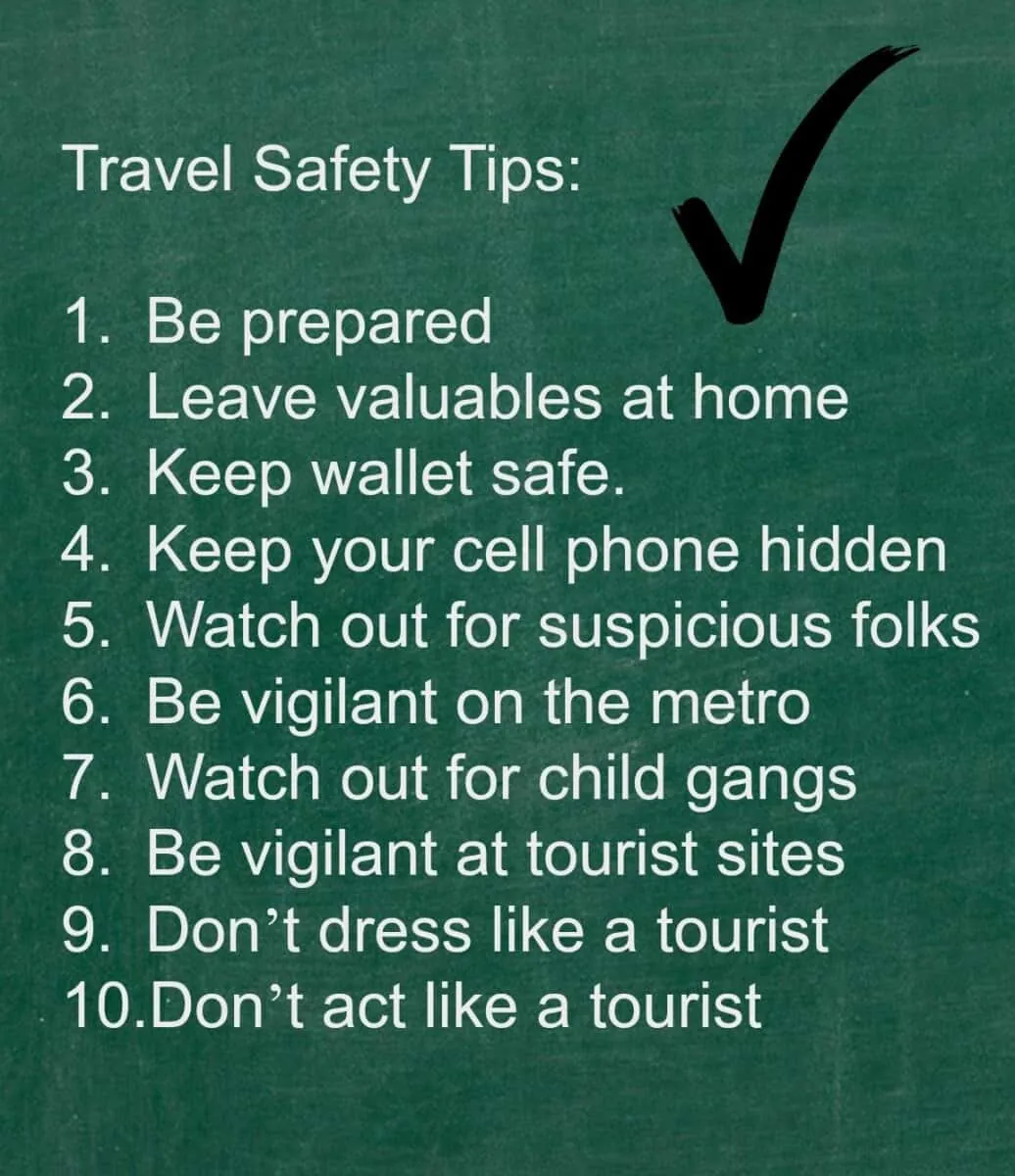
Avoid Tourist Scams
Paris, as a top travel destination, has its share of common scams targeting tourists. Stay alert and avoid the following scams:
- Bracelet Scam: Someone may try to put a bracelet on your wrist and then demand payment.
- Petition Scam: Individuals, often posing as deaf or mute, may ask you to sign a petition and then insist on a donation.
- Gold Ring Scam: A person pretends to find a gold ring and offers it to you, then demands money in return.
- Fake Charity Scam: Scammers may approach you for donations to bogus charities.
Awareness is key here. Politely decline any unsolicited offers and keep moving.
Dealing with Pickpockets
Parisian landmarks, especially crowded areas like the Eiffel Tower and the Louvre, can be hotspots for pickpockets. To safeguard your possessions, consider these strategies:
- Use Anti-Theft Bags: Secure bags with zippers and locks deter thieves.
- Avoid Back Pockets: Don’t carry wallets or phones in easily accessible pockets.
- Stay Vigilant: Keep an eye on your belongings, especially in crowded places.
- Divide Valuables: Spread out your cash, cards, and ID in different pockets or bags.
- Be Cautious of Distractions: Pickpockets may work in teams to divert your attention. Remain focused if someone engages you unexpectedly.
When in doubt, a situation requiring sudden generosity or distraction could be a setup for theft. Subtle awareness helps in staying one step ahead of pickpockets.
Formal Greetings and Cultural Norms
Understanding French etiquette can significantly enhance your interactions with locals. French culture values formality and respectful greetings:
- Greetings: Always begin with “Bonjour Madame” or “Bonsoir Monsieur” when addressing someone.
- Politeness: Simple words like “s’il vous plaît” (please) and “merci” (thank you) go a long way.
- Dining: Say “Bon appétit” before starting a meal.
Observing these norms shows respect and can lead to more pleasant and helpful interactions.
Awareness of City Life
Paris is vibrant yet has all the complexities of a major city:
- Crowds and Traffic: Expect bustling crowds, especially around popular attractions.
- Trash and Rodents: Be prepared for occasional garbage and rodents, particularly in densely populated areas.
Understanding these realities helps in setting realistic expectations and appreciating the city’s charm even though its urban challenges.
Store and Restaurant Hours
Planning around local business hours can optimize your schedule:
- Store Closures: Many shops close on Sundays or Mondays.
- Restaurant Hours: Restaurants typically close between 2-7 PM. Plan your meals accordingly or explore alternatives like boulangeries and patisseries.
Scheduling meals and shopping during open hours ensures you make the most of your time in Paris.
Accommodation Tips
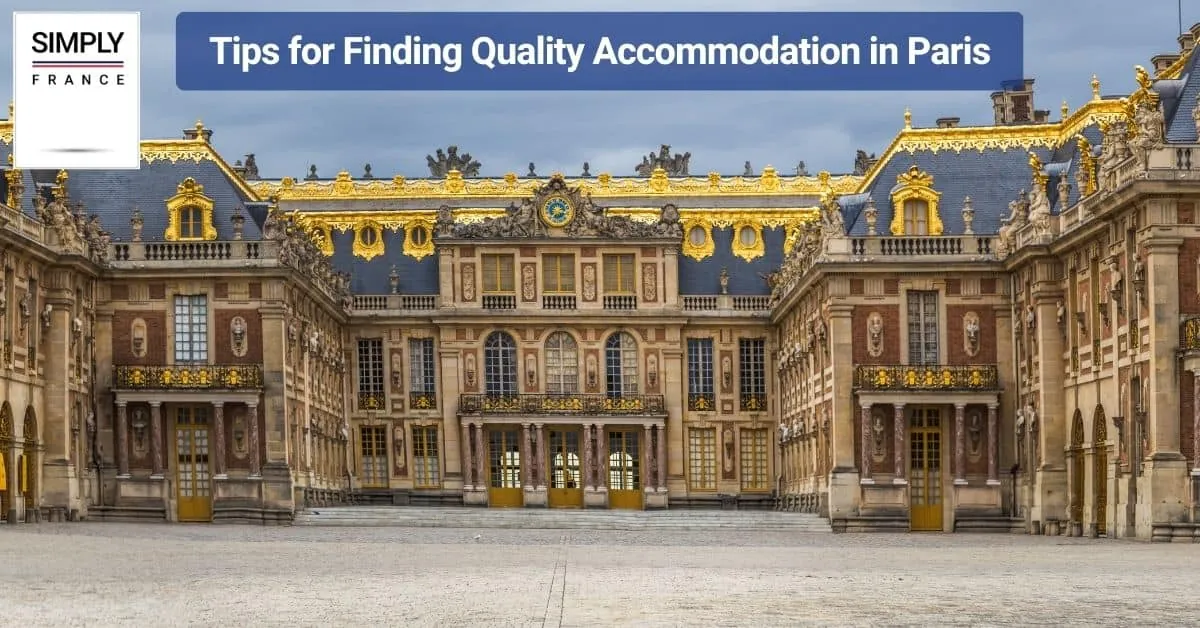
Best Areas to Stay
Selecting a neighborhood in Paris makes a big difference in your experience. Central areas offer the best access to landmarks, dining, and transportation. Consider staying in:
- Le Marais: A historical district with cobbled streets, trendy shops, and bustling nightlife. It’s perfect for those who want to combine history with contemporary culture.
- Saint-Germain-des-Prés: Known for its classic Parisian charm, this area features literary cafés, art galleries, and boutique shops. It’s ideal for art and history lovers.
- Latin Quarter: Close to universities and known for its vibrant atmosphere, this area offers an array of bookshops, cafés, and historic sites, perfect for young travelers and intellectuals.
Booking and Planning
Book your accommodations well in advance, especially during peak seasons (June to August and September to October). Using reputable websites or travel guides ensures reliability and may offer additional perks like discounts or package deals. Look for hotels that provide essential amenities such as air conditioning, especially in warmer months.
Hotel Recommendations
Choosing the right hotel enhances your trip. Consider these options:
- Louison Hotel: Offers essential amenities like air conditioning, making it a comfortable choice during summer.
Neighborhoods to Avoid and Favor
Avoid staying in areas too far from the city center, as it makes exploring the city more difficult. Opt for central neighborhoods to fully experience Paris:
- Avoid: Outlying neighborhoods that increase travel time to major attractions.
- Favor: Central arrondissements that allow you to walk or take short metro rides to landmarks and dining spots.
| Neighborhood | Key Attractions Nearby | Ideal For | Example Hotel |
|---|---|---|---|
| Le Marais | Musée Picasso, LGBTQ+ bars | History enthusiasts, nightlife lovers | Louison Hotel |
| Saint-Germain-des-Prés | Café de Flore, Louvre | Art lovers, shoppers | N/A |
| Latin Quarter | Notre Dame, Sorbonne | Young travelers, academics | N/A |
Choosing the right neighborhood and hotel requires considering your interests and travel style, ensuring an enjoyable stay in Paris.
Off the Beaten Path Activities
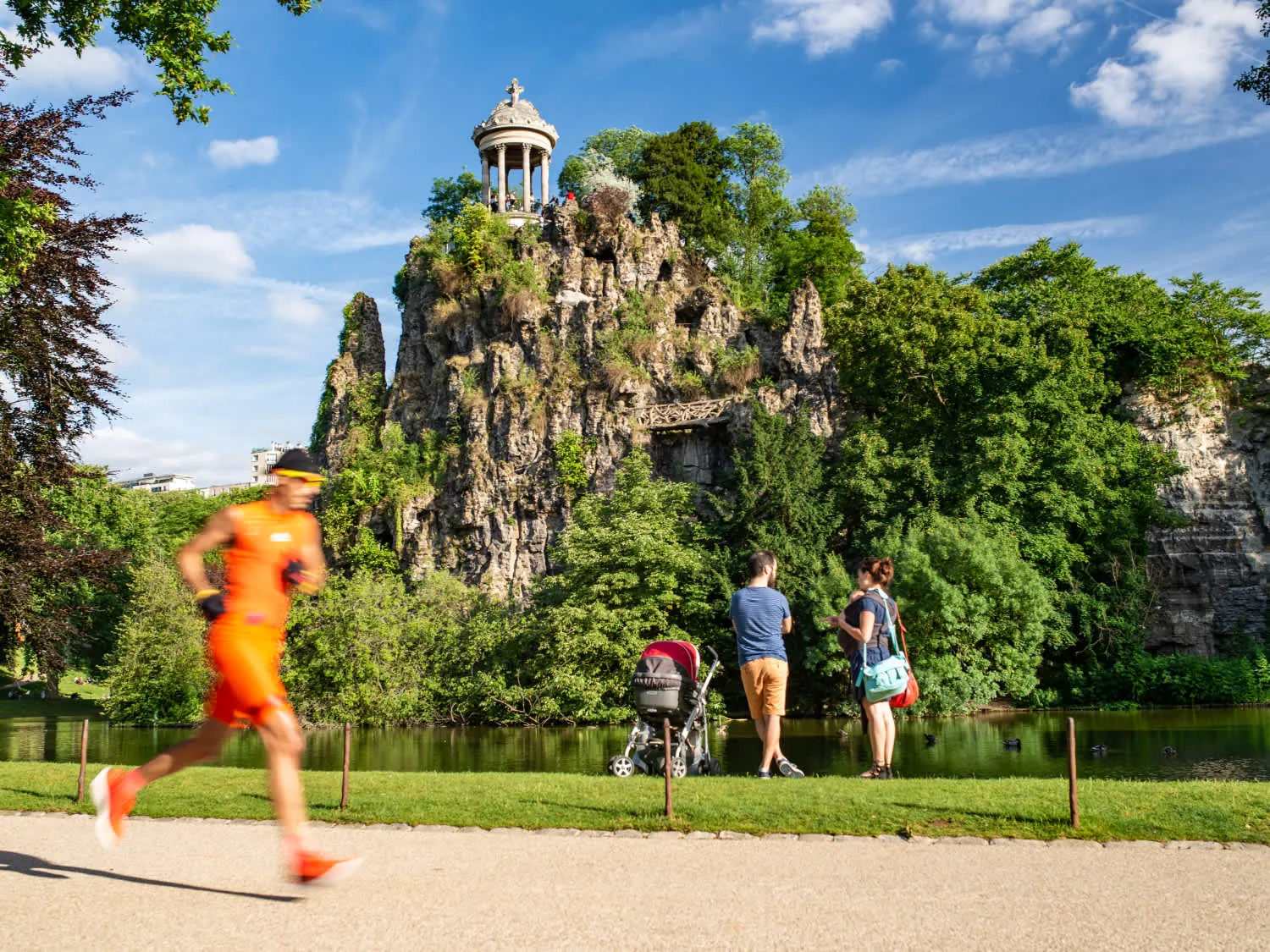
Exploring Paris offers more than the classic tourist spots. Consider these unique activities for a fresh perspective.
Discover Canal Saint-Martin
Canal Saint-Martin is a quieter, picturesque neighborhood. Walk along its tree-lined pathways or enjoy a boat tour. It’s perfect for a serene afternoon.
Explore La Promenade Plantée
La Promenade Plantée, a 4.7 km elevated park, stretches from Bastille to Bois de Vincennes. Stroll or bike through lush gardens while escaping the city’s bustle.
Visit Le Marché des Enfants Rouges
Le Marché des Enfants Rouges, Paris’ oldest covered market, located in the Marais, dates back to 1628. Find diverse food stalls, from Moroccan to Japanese cuisine, amidst a historic setting.
Experience Atelier des Lumières
Atelier des Lumières presents immersive digital art exhibitions within an old foundry. Located in the 11th arrondissement, these captivating displays merge art and technology.
Wander Père Lachaise Cemetery
Père Lachaise Cemetery is an extensive cemetery with notable graves, including Oscar Wilde and Jim Morrison. Wander its peaceful alleys, appreciating the blend of history and art.
Enjoy Parc des Buttes-Chaumont
Parc des Buttes-Chaumont, in the 19th arrondissement, provides dramatic landscapes, including a temple-topped island and waterfalls. It’s ideal for a picnic or leisurely walk.
Explore Rue Crémieux
Rue Crémieux is a charming street near Gare de Lyon. Its pastel-colored houses and cobblestone roads offer a delightful break from busy city life.
Attend a Rooftop Cinema
Attend a rooftop cinema at venues like Le Perchoir or Galeries Lafayette. Enjoy stunning views of Paris while watching classic films.
Discover Les Passages Couverts
Les Passages Couverts, historic covered passages, feature boutique shops, cafes, and unique architecture. Popular passages include Passage des Panoramas and Galerie Vivienne.
Savor Parisian Craft Beer
Paris boasts a burgeoning craft beer scene. Visit breweries like Paname Brewing Company or Deck & Donohue for a taste of local brews.
Explore Rue Mouffetard
Rue Mouffetard in the Latin Quarter brims with markets, bakeries, and cafes. It provides a lively, authentic Parisian experience.
Visit Musée de la Chasse et de la Nature
Musée de la Chasse et de la Nature, located in the Marais, offers a unique collection blending nature, art, and artifacts related to hunting.
Experience the Paris Catacombs
Tour the Paris Catacombs to see intricate arrangements of human bones beneath the city. This intriguing site requires advance booking due to limited entry.
Stroll Along Promenade des Berges de la Seine
Promenade des Berges de la Seine offers riverside paths, floating gardens, and activity spaces. Walk, jog, or relax with a view of the Seine.
Explore Parc de la Villette
Parc de la Villette, an expansive cultural park, hosts events, concerts, and exhibitions. It includes themed gardens and iconic red structures for family-friendly exploration.
Attend a Performance at Café de la Danse
Café de la Danse is a quaint venue in Bastille, hosting diverse performances. Check out local musicians and international acts for a cozy and intimate experience.
Discover the Lavender Fields of Paris
Located at Jardin des Plantes, the lavender fields bloom between June and July, creating a picturesque and aromatic escape within the city.
Visit La REcyclerie
La REcyclerie, a former railway station turned eco-friendly café, offers workshops, local food markets, and a communal garden. It’s perfect for sustainable travelers.
Explore Les Frigos
Les Frigos, an artists’ collective in an old warehouse, opens its doors occasionally for public art viewings. Discover contemporary art within a unique setting.
Experience Marché aux Puces de St-Ouen
Marché aux Puces de St-Ouen, one of the largest flea markets in the world, offers antiques, vintage fashion, and collectibles. It’s a treasure trove for bargain hunters.
Enjoy a Night at La Bellevilloise
La Bellevilloise in Ménilmontant is a lively venue for music, art, and film. Participate in diverse cultural events within this vibrant space.
These activities ensure a unique, memorable Paris experience, beyond the typical tourist agenda.
Conclusion
Paris is a city that promises unforgettable experiences, from its iconic landmarks to its hidden gems. By being well-prepared and embracing local customs, you can navigate the City of Light with confidence and ease. Remember to explore beyond the typical tourist spots and immerse yourself in the vibrant culture that makes Paris so unique. With these 21 essential tips in mind, you’re set for an enriching and memorable adventure in one of the world’s most enchanting cities. Enjoy every moment of your Parisian journey!
Frequently Asked Questions
What is the best time to visit Paris?
The best times to visit Paris are spring (April to June) and autumn (September to November). These seasons offer mild weather and fewer tourists, making it perfect for sightseeing and enjoying the city’s attractions.
Which neighborhoods in Paris are best to stay in?
Central areas like Le Marais, Saint-Germain-des-Prés, and the Latin Quarter are recommended for their proximity to landmarks, dining, and transportation. Booking well in advance is advised, especially during peak seasons.
How can I navigate Paris using public transportation?
Paris has an efficient public transport system including the metro and RER trains. It’s easy to navigate using maps and apps. Tickets are available for single rides or as multi-day passes. Rideshare services and bike-sharing programs are also popular options.
Should I learn French phrases before visiting Paris?
While many Parisians speak some English, learning basic French phrases like “Bonjour” (Hello) and “Merci” (Thank you) is highly recommended. It shows respect for local culture and helps in daily interactions.
What are some must-see attractions in Paris?
Key attractions include the Eiffel Tower, Louvre Museum, Musée d’Orsay, Notre-Dame Cathedral, and Montmartre. Each offers rich historical and cultural experiences and should be on any traveler’s list.
What are some tips for dining in Paris?
Restaurant dining times usually start around 7:30 PM. Reservations are often necessary for popular restaurants. Bistro and café culture is strong, and tipping is appreciated but not mandatory since service is included in the bill.
How can I keep my money safe in Paris?
Use a combination of cash and credit cards. Major cards are accepted widely, but cash is preferred in some traditional establishments. Use ATMs for better exchange rates and be cautious of pickpockets in crowded areas.
What type of etiquette should I follow in Paris?
Politeness is vital. Always greet with “Bonjour” or “Bonsoir” and follow local customs like dining etiquette. Respecting these norms fosters positive interactions with locals.
Are there off-the-beaten-path activities to do in Paris?
Yes. Explore Canal Saint-Martin, La Promenade Plantée, Le Marché des Enfants Rouges, and visit unique spots like Atelier des Lumières and Parc des Buttes-Chaumont for less touristy experiences.
How safe is Paris for tourists?
Paris is generally safe, but be mindful of common scams like the bracelet scam and pickpocketing in crowded areas. Use anti-theft bags and stay vigilant to ensure a safe visit.

